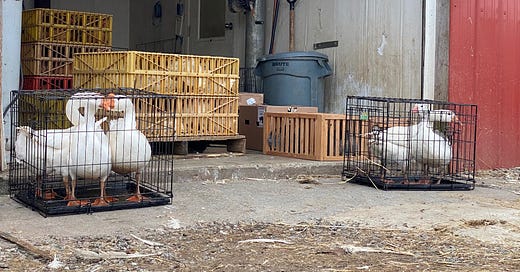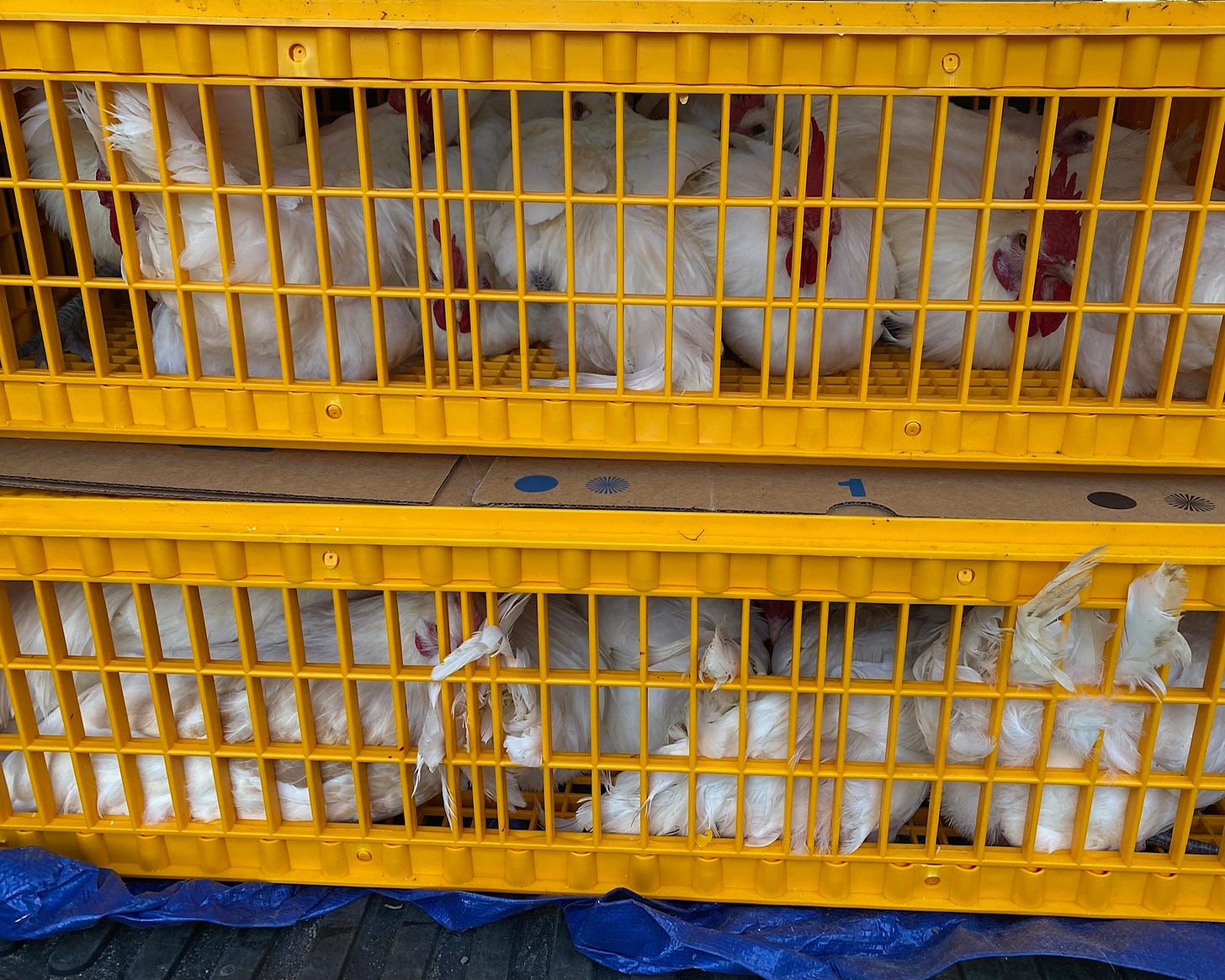We’re at the butcher's doorway.
Watching us from a pasture across the road are a gaggle of geese confined by a wire fence. I don't think they see their pen as a cage. They are separated from my geese, who know about their cage, by time. And not much of it.
While our birds stand watching, I tell the butcher how to cut them up.
We're at the bloodiest part of the raising-animals-for-food cycle. For the butcher, the bloody part is their business. Today there are hundreds of birds to kill. Each, one last shriek. Enough blood to paint the barn.
The butcher stands at the entrance. Beyond the door, kill after kill, the butchers confront what, for me, has long been a privilege to ignore.
We pay cash — and we are sad and grateful for the birds and the butcher.
I wrote the above after I took my third group of geese to slaughter. It was a painful moment.
Taking a group of chickens to the same slaughterhouse just a couple weeks ago, those feelings were absent. I caught the birds at dawn, put them in crates and loaded them in the car. Before I drove to the butcher, I went inside and sat down to a cup of coffee. With the sun rising, I read a recipe for grilled chicken hearts.
Since raising animals for meat I’ve learned to love the flock above all. The flock is the birds here now, the birds that came before them and the birds that will come from them. It means doing what’s right for the group and the future of the group. When these latest chickens went to slaughter, taking them wasn’t so hard because it had to happen – and soon. The flock developed an unsustainable social dynamic, there were too many roosters causing too much trouble. Unlike the geese, who are so peaceful that I find it hard to remember that their death sustains our family and makes room for the next generation, another chance to raise stronger birds.





